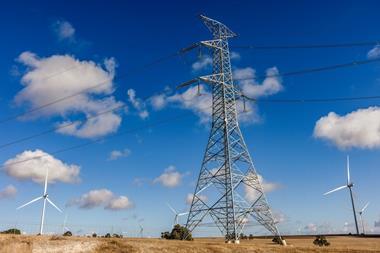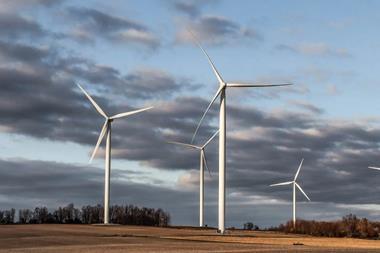The energy transition – which has become an expansion driving demand across all sources like nuclear and solar – presents investment opportunities for diversified portfolios across the power spectrum, writes Jim Wright
The prevailing wisdom has for some time been that infrastructure equities are no more than a “boring bond proxy”. As interest rates rise and bond prices fall, so too must listed infrastructure asset prices and, given the trajectory of rates over the past two years, it hasn’t been a pretty picture for the sector.

But to view listed infrastructure as merely a poor relation of the bond market misses not only the wider story but also the potential returns on offer.
Investors are always looking for inflection points and one major recent shift has been the surging demand for electricity in the US. For almost 20 years, electricity demand in the US has flatlined, with no growth at all.
However, according to a report from US consultancy Grid Strategies, demand is set to grow by 4.7% in 2024, and even this figure is likely to underestimate true levels of demand.
Until fairly recently, the changing dynamics of the power market have been largely overlooked by investors, however slowly but surely, markets are beginning to wonder what this all means for the sector.
Listed utilities infrastructure usually performs in lockstep with rates but, in just the last month, bond prices fell, the US ten-year Treasury yield leapt from 4.20% to 4.68% … yet utilities were the best performing sector in the S&P 500 Index over the month.
True, this could be attributed to healthy stock rotation as the US technology giants start to underperform, but the performance of individual utilities companies – especially those with stable balance sheets and merchant pricing power – suggests investors are also starting to recognise the huge potential these companies hold as the energy landscape shifts.
Three drivers behind surging electricity demand
First, there’s the inevitable move towards electric vehicles (EV). According to the US Energy Information Association (EIA), less than 100,000 EVs were registered in the US in 2012. A decade later, more than 3m EVs were registered, accounting for 1.2% of all registered light-duty vehicles and 7% of light-duty vehicle sales in the country. Demand has been further stoked by the government’s $7,500 federal tax credit for EVs which meet the strict requirements on domestic battery sourcing.
Despite these changes in consumer spending, the EIA acknowledges that this growth in EV ownership will only be sustainable if we see significant expansion of battery-charging infrastructure. However, it is certain that demand for electricity from cars, trucks and buses in the US will grow over the next decade as EVs displace internal combustion engine vehicles.
Secondly, the US has seen huge reshoring of manufacturing on the back of geopolitical tension and post-pandemic supply chain concerns, with semiconductors emerging as the reshoring sector du jour. The passing of the CHIPS and Science Act in 2022 accelerated investment into microchip development projects and, alongside state incentive programmes, the Act incorporated a clause aiming to establish a minimum of twenty new tech hubs across the country.
While legislation should open up semiconductor investment opportunities in a wider range of areas, these cannot be met without significant additional investment to plug the electricity gap they will require.
Thirdly, the biggest impediment to the large-scale rollout of AI is the availability of electricity. As such, the US has seen unprecedented development of data centres and processors in an attempt to meet demand. Yet even Elon Musk has warned that insufficient electricity supply risks becoming a chokepoint.
Growing electricity demand requires more power generation, more transmission, more distribution, and more capacity and resilience in networks. But this accelerating demand has arrived at a time when coal-fired plants are largely being decommissioned. The energy transition has become an energy expansion, increasing demand for all types of energy from nuclear to solar.
This creates opportunities for investors which are diversified across the power spectrum.
Renewables, for example, are replacing some of the capacity that coal previously provided. The fundamentals for solar and onshore wind are particularly strong, and battery storage linked to solar and to wind provides a partial solution to the intermittency problem with these renewable energies.
We’ve also observed a new trend of corporates signing purchasing agreements to buy renewable power direct in order to meet their net zero commitments.
We see further opportunities in energy transmission, as the geographic area where power is generated is not necessarily the same as where the demand is, and investment in distribution grids to facilitate EV charging will help address range anxiety.
Will the US election stall the sector’s growth?
A natural question at this point in 2024 is whether the outcome of the US election could derail the fundamental growth story we see for the sector. While some commentators might cite a divergence between “pro-renewables Democrats” vs. the “pro-fossil fuel Republicans”, the reality is more nuanced.
A second term for president Biden would likely see the continuation of pro renewables policies. While a Trump presidency and Republican congress could see some cuts to EV subsidies or changes made to the Inflation Reduction Act, the truth is that the growth of renewables has been far more concentrated in red states than in blue.
Solar thrives in the southern states, and wind works best in the plains states such as Iowa and Oklahoma, and down into central Texas. The availability of cheap, renewable energy – plus the jobs and supply chains it creates – are increasingly integral parts of local economies, something Republicans would not wish to jeopardise.
It would be disingenuous to deny that rising rates have been a headwind for listed infrastructure - not least because of the negative impact it has had on market sentiment - just as it would be disingenuous to deny that falling rates would become a tailwind for the sector.
But, regardless of sentiment, the fundamentals of electricity infrastructure look stronger than they have done for the past twenty years. To meet the demands of this new energy economy, we’ll need a lot more than bond proxies.


















